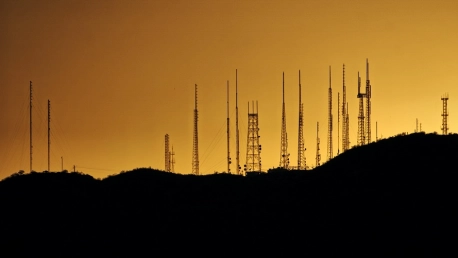Being able to circulate information quickly and efficiently during times of crisis can be a lifeline for many. Even though telecom is taken for granted every day, it serves as a critical tool when disaster strikes. These networks are what bind together rescue efforts and emergency responses when a community is affected by a sudden crisis. Moments of crisis require immediate and effective communication, whether it’s a natural catastrophe like an earthquake, a hurricane, or even a human-made disaster—it can mean the difference between life and death.
From facilitating real-time coordination among first responders to enabling emergency alerts for the public, the functions of telecommunications in such scenarios are multifaceted and crucial. However, the challenges are equally formidable. With regard to maintaining connectivity, there are a few bumps in the road that can cause serious delays, like network congestion and power outages, even physical destruction to name a few. In this article, we will take a closer look at the pivotal role telecommunications play in disaster management, highlighting how this often invisible network becomes conspicuously vital when disaster strikes.
Telecommunications Infrastructure: Preparing for the Worst
Within disaster management, the robustness of telecommunications infrastructure forms the bedrock of effective response and recovery. Let’s dive into the strategies and innovations that fortify these vital networks against the unpredictable wrath of nature and other calamities.
Building Resilient Networks
Creating resilient infrastructures is the cornerstone of disaster-prepared telecommunications. This resilience is multifaceted and encompasses not only physical durability but network redundancy and rapid deployability. Physical durability involves constructing communication towers and equipment that can withstand extreme weather conditions, seismic activities, and other environmental stressors. Network redundancy is equally crucial, and ensures that the failure of one node doesn’t cause a domino effect, resulting in an incapacitated communication network. This involves implementing multiple pathways for data transmission that include underground cables, aerial fibers, and satellite links—creating a mesh of interconnected routes that ensure continuous communication even when some paths are compromised.
Post-disaster, the concept of rapid deployability comes into play, where mobile cell towers and temporary communication setups can be swiftly deployed in affected areas. These mobile units that are often transported via trucks or airlifted are crucial in re-establishing communication links in areas where traditional infrastructure has been damaged.
Innovations in Disaster-Ready Tech
Over the years, tech that aims to assist in disaster-ready telecom infrastructure has improved quite a bit. In fact, one of the groundbreaking advancements is the integration of Artificial Intelligence (AI) and Machine Learning (ML). Of course, with how popular AI has become, it was only a matter of time before we found a way to integrate it into how we respond in the face of a threat. These tools can predict infrastructure vulnerabilities and optimize network responses during these disasters.
Drones have also come in quite handy for assessing and repairing telecom structures. What makes them so useful is the fact that they have cameras and sensors that can survey damaged areas much quicker than we ever could, and then give us the info in real-time. Also, some drones out there are such little overachievers that they could even perform small repairs. However, what’s just as crucial is satellite communications in disaster scenarios, providing a reliable backup when terrestrial networks are compromised.
The Key to Effective Disaster Management
When disaster strikes, time isn’t just ticking; it’s racing. This is where rapid communication through telecom networks becomes the superhero in the story of disaster management. It’s all about getting the right information to the right people at the right time. And let’s be real, in times of crisis, this kind of efficiency can save lives.
Warning Systems and Mass Alerts
Picture this: a storm is brewing off the coast, and it’s headed straight for a populated area. Here’s where early warning systems come into play. Thanks to advanced telecom networks, authorities can send out mass alerts to people’s phones, radios, and TVs, giving them crucial time to evacuate or prepare. It’s like having a high-speed messenger that can reach millions in seconds. These alerts aren’t just general warnings; they’re often personalized, giving specific instructions based on your location. It’s like getting a direct message from the disaster management team.
Overcoming Obstacles in Disaster Zones
One of the hardest hit areas of a disaster is often telecom, and these structures need a quick fix to get everyone, including disaster management teams, back online. Restoring communication services is crucial, but it necessitates navigating a maze of technical complexities and infrastructural hurdles.
Restoring Communication Post-Disaster
The immediate challenge in the wake of a disaster is to re-establish communication lines that are regularly disrupted or completely destroyed. This involves a multi-pronged technical strategy. Firstly, assessment teams equipped with specialized detection equipment rapidly evaluate the extent of damage to the communication infrastructure. This includes examining fiber optic routes, cell towers, and satellite links. Based on these assessments, emergency response teams prioritize the restoration process, focusing initially on critical communication lines used by emergency services.
Deployable communication units, such as Cellular on Wheels (COWs) or Cells on Light Trucks (COLTs), play a crucial role in this phase. These mobile units can be positioned quickly in affected areas to provide temporary network coverage. Additionally, the use of tethered drones and aerostats (balloon-like structures) equipped with telecom hardware can provide temporary aerial coverage over large areas.
Navigating Obstacles
The path to restoring full telecommunication services in disaster-struck areas is laden with technical and logistical obstacles. One of the primary challenges is power outages. Telecommunication infrastructure heavily relies on a stable power supply, which is often compromised during disasters. Integrating alternative power sources like generators, solar panels, and battery backup systems is crucial in such scenarios.
Telecom’s Role in Keeping People Connected
Let’s shift gears and talk about the human side of things in disaster situations. When everything else is falling apart, staying connected with others can be a real game-changer, both emotionally and practically.
Staying Connected with Loved Ones
Imagine being in a disaster-hit area and not knowing whether your family or friends are safe. That’s where telecom comes in as a lifeline. Being able to send a text, make a call, or even use social media to check in can be incredibly reassuring. It’s more than just technology at this point; it’s about keeping those invisible threads of connection between people intact. For many, a simple “I’m safe” message can bring a huge sigh of relief in tense situations.
Supporting Community Resilience
When communities need to come together, telecom makes it possible. After a disaster, people often turn to local online forums, community texting networks, or social media groups to share information. They may also offer help or need information on where to find essential resources like food, water, and shelter. It’s heartwarming, to say the least when a community comes together to help each other out, and telecom provides the platform for them to rally together as a group.
Telecom also plays a part in the emotional healing process. Being able to talk to someone, share experiences, or just listen to a familiar voice can help people process what they’ve gone through and start to heal.
So, while we often talk about the technical side of telecommunications in disaster management, it’s good to remember that at the heart of it all is the human connection. It’s about keeping those lines of communication open, not just for the sake of surviving, but also to get some form of comfort, support, and recovery. When you look at the bigger picture, it could be these connections that help us bounce back stronger than ever.
The Bottom Line
In the face of disaster, these networks transform into a life-saving connection in the literal sense of facilitating rescue operations and also in the emotional sense of connecting separated families, supporting traumatized communities, and rekindling hope amidst the chaos. They embody the resilience of human ingenuity, never standing down when posed with natural and man-made crises.
But beyond the technical capabilities and strategic implementations, it’s the stories of human connections that truly define the value of telecommunications in disaster situations. It’s about the comfort found in a text message from a loved one, the relief in a community’s collective effort to rebuild, and the strength drawn from knowing that even in the darkest of times, we are not alone.









